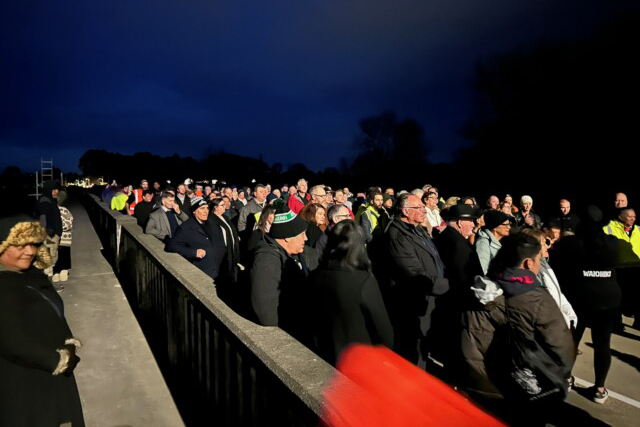The re-opening of the Redclyffe bridge is another step towards getting lives back to normality for Waiohiki residents, says deputy chair of Waiohiki Marae, Laurie O’Reilly.
The nearly 89-year-old bridge over the Tūtaekurī River, a key route between Napier and Hastings, was extensively damaged as a result of Cyclone Gabrielle on February 14.

The bridge, at Waiohiki, reopened to traffic with weight and speed restrictions on Tuesday, August 8.
O’Reilly said there had been a constant stream of traffic since the cyclone through Waiohiki, but the traffic was limited to supporting the recovery effort from the cyclone.
“For those who are currently residing in Waiohiki, the re-opening of the bridge is another step towards getting our lives back to normal.”
He added the Waiohiki community as a whole was supportive of the re-opening of the bridge.
“We have arguably been inconvenienced the most from the bridge being closed,” O’Reilly said, however, some concerns remained.
“The concerns relate to whether the Government, Councils and Waka-Kotahi were going to again avoid proper investment in infrastructure, where this stop gap measure becomes the long-term solution because other government priorities have come to the fore.”
He said the Waiohiki/Redclyffe bridge was not designed to cope with the volume of traffic prior to the cyclone.
“More so, the design of the bridge could not cope with the slash and debris and caused a damming effect which significantly contributed to the flooding of Waiohiki.
“The majority of Waiohiki did not even have a stop bank protecting it. There were also practical concerns relating to traffic management, clearing the silt off the road, removal of rubbish and debris, and providing security for unoccupied homes.”
Waiohiki had 90 of its 100 dwellings yellow or red stickered as a result of the cyclone.
“We are only starting to have residents move back recently, myself included. Some whanau are still suffering from trauma from the cyclone,” O’Reilly said. “They don’t want their recovery effort to be impeded by threats real or perceived.”
He said many of the concerns had been addressed by police, and the Hastings District Council at the community meeting at Waiohiki Marae on August 2.
The bridge was reopened using the span elements of the old bridge which helped enable the connection to be re-established more quickly and allowed there to be two-way traffic flow and a walking and cycling connection.
The focus of the works was to re-establish a connection for light vehicles and emergency services as a key priority.
As such, the bridge will be open to light vehicles (up to eight tonnes), public transport, and emergency services only. Trucks and vehicles over eight tonnes will be required to keep travelling via the SH2 crossing of the Tūtaekurī River.
Hastings District Council group manager asset management Craig Thew said the load restriction was needed due to the sections/spans of the old bridge at each end.
“These sections have cracks that have been treated, but they will require monitoring and ongoing management of loads placed on the bridge.”
As there is still work happening through the Waiohiki community, and to help manage the traffic flows, there will also be a speed restriction of 30km/hr over the bridge and the full length of Waiohiki Road and the intersections at each end.
Council and its contractors, alongside police, will monitor the site and review the traffic controls over time.
“We ask that the wider community is patient and respectful as this link reopens, and that they do not stop and park their vehicles given there is work continuing in the area,” Thew said.
Hastings District Council thanked police for working alongside the community and council to support the safe, secure reopening of this area.
Council also thanked the Waiohiki and surrounding community for their patience while the significant work to re-establish this important connection was completed.
Having the temporary bridge in place will allow for the consideration of any future flood control works, and planning and consultation on the future road network and permanent bridge options.
Public Interest Journalism funded through NZ On Air


Temporary bridge better then no bridge.